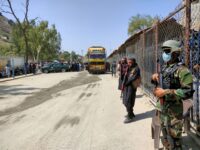When it comes to high-risk professions, effective leadership, and open communication can mean the difference between life and death. The devastating crash of Air Blue Flight 202 on July 28, 2010, serves as a stark reminder of the consequences of toxic leadership and the importance of fostering a culture of collaboration and assertiveness in high-stakes environment.
According to the flying instructor Ashley Derrick article published at his LinkedIn profile, Air Blue Flight 202, en route from Karachi to Islamabad, met a tragic end when the crew, executing a visual approach in adverse weather conditions, became disoriented and crashed into the Margalla Hills. The main factors contributing to the accident included the Captain’s violation of approach procedures and the First Officer’s failure to challenge his superior’s decisions.
The aircraft was cleared only for a visual approach with the ground in sight. Despite the deteriorating weather, the Captain chose not to divert the flight. He decided to conduct a visual approach using the autopilot’s managed mode—a violation of established procedures. To make matters worse, he ordered the First Officer to enter four unauthorized waypoints into the flight management system, and he engaged the autopilot, another clear violation. The First Officer did not challenge these actions, and the ad hoc waypoints steered the aircraft perilously close to the nearby hills, with zero visibility.
As the situation escalated, the Captain became disoriented, confused, and overwhelmed. The Ground Proximity Warning System alerted the crew of the approaching terrain, but the Captain’s last-ditch attempt to maneuver the aircraft away from the hills was insufficient. Meanwhile , despite warning the Captain repeatedly, the First Officer failed to intervene and take control of the situation.
A significant factor in the tragedy was the high authority gradient between the Captain, a 61-year-old veteran with 25,497 flying hours, and the First Officer, a 34-year-old with only 1,837 flying hours. From the start of the flight, the Captain mistreated and humiliated the First Officer, using a snobbish tone and harsh words that crushed the younger pilot’s confidence. This toxic dynamic stifled the First Officer’s assertiveness when it mattered most—when the Captain was flouting the rules.
Let’s Learn
The harrowing tale of Air Blue Flight 202 serves as a powerful lesson on the perils of toxic leadership, especially in high-risk, high-stakes settings. The repercussions of such leadership can be catastrophic, as evidenced by this tragic accident. To prevent similar calamities and safeguard the well-being of their teams, leaders must be proactive in cultivating a healthy organizational culture.
Fostering a culture of open communication is crucial in enabling team members to voice their concerns, share opinions, and flag potential hazards without fear of retaliation. Leaders can create a safer, more collaborative work environment by promoting transparency and dialogue.
Encouraging assertiveness among team members is equally important. Empowering individuals to speak up and challenge decisions, even those made by higher-ups, can significantly improve decision-making processes and reduce the likelihood of errors. By creating a culture where everyone’s input is valued, leaders demonstrate their commitment to safety and continuous improvement.
Finally, mutual respect should be the cornerstone of any team. Treating everyone with dignity and fairness, regardless of their position within the organization, fosters trust and strengthens relationships among team members. When leaders lead by example and exhibit respect for their subordinates, they pave the way for an inclusive and supportive workplace.
The tragic story of Air Blue Flight 202 underscores the imperative need for leaders to prioritize a healthy organizational culture. By embracing open communication, assertiveness, and mutual respect, leaders can prevent future disasters and create a thriving environment that promotes safety, innovation, and growth.






